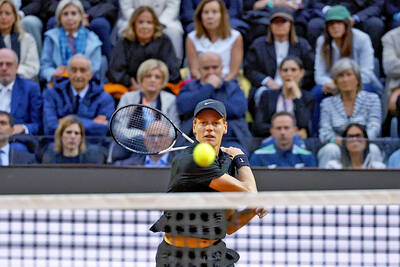As Major League Baseball’s top players took the field at the All-Star Game in Minneapolis last July, a covert radar system scanned the sky above the 40,000-seat stadium for what security experts said was an emerging threat to public safety: drones.
Using finely tuned detection programs brought in by the US Department of Homeland Security, “Operation Foul Ball,” as it was known, identified several small, commercial drones flying in the area. Some were similar to the quadcopter that crashed on the White House lawn on Monday.
However, the drone detection system — which was considered one of the most advanced in the country and cost several hundred thousand dollars to operate for just that night — had no way of actually stopping drones from flying into the stadium. There was even confusion about whether one of the drones belonged to ESPN.
Confronted with the system’s cost and limitations, baseball officials decided not to use it for the postseason. However, those officials had no warning before a drone hovered over at least one playoff game.
The National Football League will not say what type of system, if any, it will have in place at the Super Bowl in Glendale, Arizona, tomorrow, though the Federal Aviation Administration issued a warning this week that anyone flying drones over an NFL game could be “intercepted, detained and interviewed.”
While drones have not been used in a terrorist attack on US soil, thwarting them is increasingly becoming a challenge for law enforcement and security officials who are charged with protecting large-scale events like the Super Bowl and high-profile public buildings like the White House. The officials have warned that the low-flying devices could be modified to carry explosives, chemicals, biological agents, guns or cameras.
This month, an analyst for the National Counterterrorism Center told a gathering of military, law enforcement and public utility officials in Arlington, Virginia, that extremist interest in “unmanned aircraft systems” had spiked recently. In the past 16 months, he said, the working group for unmanned aircraft systems threats had grown to 65 members from four, according to a participant at the gathering.
“Efforts by terrorists to use drone technology are obviously a concern for NCTC and the intelligence community,” said a spokesman for the counterterrorism center, who requested anonymity to discuss security matters. “Our focus remains on identifying these threats and supporting those agencies who are responsible for countering them.”
Officials at the White House said the Secret Service’s air security branch had been working for years to find ways to deter low-flying drones that are too small and fly too low to be tracked by conventional radar, which was designed to pick up missiles and planes.
However, Monday morning’s incident suggested that the systems in place around the White House were unable to prevent even a toy drone from flying over the wrought-iron fence.
The vast majority of drones are purchased for nonthreatening, personal use, and businesses are expressing interest in using drones to speed deliveries, produce high-quality videos or improve management of crops.
However, officials are not taking the threat lightly. A White House spokesman said on Wednesday that the Secret Service was “constantly reviewing emerging technologies.” Law enforcement officials said that the government did not yet have a “silver bullet” that could stop a drone in its tracks.
At the gathering in Arlington this month, intelligence and law enforcement officials showed a widely watched YouTube video of a masked man demonstrating the effectiveness of a hobbyist drone equipped with a paintball gun and a remote trigger. The video showed the drone accurately firing on cutouts of human beings.
A spokesman for DJI, which manufactured the drone that crashed at the White House, said on Wednesday that the company takes security issues seriously and had issued updates to its software that would use GPS chips in the drones to block their use in much of Washington. The company already issued similar blocks near 2,000 airports worldwide.
“The platform will recognize when it’s a certain distance from those no-fly zones and stop itself,” company spokesman Michael Perry said.
Perry said that his company had been in contact with law enforcement about ways to develop protections against the misuse of its drones. However, he said the company would never be able to make sure that people only use the drones responsibly, for conservation efforts, firefighting, search and rescue, sports or recreation.
“Ultimately, it depends on how people choose to use the technology,” Perry said. “We can create 100 barriers to someone using this technology improperly, and someone will find the 101st way to use it improperly.”
For law enforcement officials, the question is whether they can develop systems that effectively detect — and eventually stop — drones approaching potential targets. Several companies, including DroneShield, advertise commercial systems that can detect and warn about drones.
“Our solution would have been able to warn people before the drone got over the property,” DroneShield founder Brian Hearing said this week after the White House incident.
The problem with the system that was used at the All-Star Game last summer was that even after a drone was spotted on radar, security officials had to find its operator on the ground before the drone was maneuvered over the stadium.
The NFL’s head of security, Jeffrey Miller, said that the league was increasingly finding drones at stadiums and that it had banned them from team properties before the season. In the past year, though, 12 drones have landed around stadiums on game days, he said.
Miller said the league had adopted protocols for what to do if a drone landed on the field during a game. He said that play would be stopped and law enforcement officers who specialize in explosives would be called to determine whether it posed a threat.
“It’s always been hobbyists or enthusiasts,” he said. “Never anyone looking to do harm.”

SSC Napoli will have to wait one more week to seal the Serie A title after on Sunday being held to a goalless draw at Parma, while closest rivals Inter drew 2-2 in a dramatic game with SS Lazio. Antonio Conte’s team stayed one point ahead of Inter and were unfortunate not to win after twice striking the woodwork through Andre-Frank Zambo Anguissa and Matteo Politano, while Scott McTominay also had a free-kick tipped onto the crossbar. The away side thought they would be handed a chance to take the points from the penalty spot in the 96th minute when David Neres

A stunning Lamine Yamal strike on Thursday helped crown Barcelona La Liga champions with a 2-0 win over local rivals RCD Espanyol, with victory ensuring Real Madrid cannot catch them at the top of the table. Yamal’s effort and Fermin Lopez’s goal took Hansi Flick’s side seven points clear of Los Blancos with two matches remaining, to clinch Barcelona’s 28th title and complete a superb domestic treble. Only the UEFA Champions League title escaped an exciting young Barca side this season, as they won the league for the second time in six years, at Espanyol’s ground again just as in 2022-2023. Back then,

Jannik Sinner on Thursday marched into the semi-finals of the Italian Open after destroying Casper Ruud in straight sets 6-0, 6-1, while Coco Gauff won a marathon three-set battle with China’s Zheng Qinwen to advance to the women’s singles final. American Gauff is to face Italy’s Jasmine Paolini in today’s title match after pulling through 7-6 (7/3), 4-6, 7-6 (7/4) in a match that lasted over three-and-a-half hours. Ruud was supposed to be Sinner’s toughest test in Rome since he came back from his three-month doping ban, as the Norwegian came into the match in hot form on clay after winning in

Omar Marmoush’s stunning long-range strike on Tuesday upstaged Kevin de Bruyne on the Manchester City great’s Etihad farewell. Marmoush let fly from about 30m to put City ahead in their 3-1 win against AFC Bournemouth in the Premier League. The victory moved Pep Guardiola’s team up to third in the standings and left qualification for the UEFA Champions League in their own hands heading into the last round of the season. “It’s really important. To be in the Champions League after what happened [this season] will be really nice,” the City manager said. De Bruyne was making his final home appearance for City before